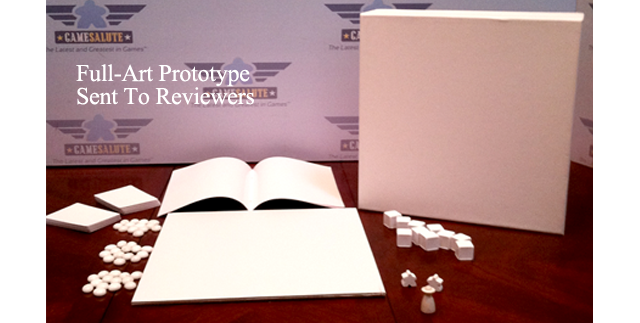Now that the gates have closed and the last invisible horse has crossed the imaginary finish line, it’s time to discuss the effect of the Emperor’s New Clothes on our subculture.
If you’ve been following the Kickstarter campaign for Emperor’s New Clothes, you’re probably aware of the controversy that surrounded it during its tenure. For those that may only be hearing about this for the first time, here’s the rundown:
Emperor’s New Clothes launched at the beginning of March. The game, and the campaign layout, was based very heavily on the children’s story, The Emperor’s New Clothes, wherein a rich and vain ruler is swindled by a pair of individuals into believing that he would receive new suits that would be invisible to anyone too incompetent or stupid. Those surrounding him, fearing for their own situation (since they saw nothing), pretended they could see the outfits, perpetuating the lie. Only at the end of the story, when the emperor is parading down the street in his new suit (that is, naked), does someone – a child – finally calls out the ruse.
From the onset, it was apparent the project was working in a very similar role. For example, take a look at the contents:
Don’t see anything? Well that’s because it’s using a new printing technique called Regulated Operator Optical Screening (ROOS) by Wysiwyg Press, and not everyone’s eyes are accustomed to the new technology. Etc. Etc. Etc.
Just looking around its pages, it was clear there was a lot of tongue-in-cheek stuff going on. I mean, the second pledge level is called “Hoke’s On You” for crying out loud. Yet folks were still cautiously optimistic, as the game was the creation of Jonathan Liu of GeekDad fame, a well established and respected game review site. What’s more, it was being produced by Game Salute’s Springboard line, a company known to assist quite a few different independent projects. Both parties do a lot of work with Kickstarters.
These names had some weight behind them, and it gave people pause. Plus, it was quickly noted that the campaign ends at midnight on April 1st. April Fools’ Day.
Those in the gamer community who follow Kickstarters regularly got into a debate. Was it an April Fool’s Joke? Would Jonathan and Game Salute spend all that time and effort (not to mention money) on a project that they may cancel at the last minute?
Was it a planned bait-and-switch, where the real contents would be revealed magically in a later update?
Was it some kind of social commentary? And if so, what was the angle? How to run a Kickstarter? The pitfalls of crowdfunding?
Or was it seriously What-You-See-Is-What-You-Get?
Emperor’s New Clothes generated a lot of discussion, and it got a fair amount of attention. Sure, maybe not as much as the Verionica Mars project or the 9 year-old who wanted to go to computer camp, but it easily could have come in third for the month. In the end, that’s partially what Jonathan was hoping to achieve.
At first, there was a lot of positive spin around it, as people either “got it” right away and wanted in on the joke, or they pledged in the hopes that more reveals would be forthcoming. Eventually it did, though not the way people expected. In the meantime, Jonathan continued regular updates with a tone that spoke of the seriousness to the project, including trotting out various showcases on artists and updates on the game’s progress.
The proverbial dam broke about two weeks in when a post by Ken of Geek-Craft spilled the beans regarding a letter sent by Jonathan, via Game Salute, to some reviewers on his original intent with the game. (We also received that letter a couple days prior to it appearing on the web.) In it, he confessed that, no, it was not an April Fools thing, nor was a rope-a-dope planned. It was very much, in fact, partly intended to be used as a social prank by playing the game around other people, and partly buying precisely what was shown. They were asking reviewers to write about it the game however they wished, to continue the act. However, Ken, not realizing the scope of Jonathan’s intent, or that the letter wasn’t meant to be public, posted it. Granted, he and Jonathan chatted afterwards and came to an understanding that didn’t leave either side upset, but for the public writ large the damage was done.
Once the article got around, it was now perfectly clear people were going to get exactly what it looked like they were the entire time: white game components.
Blank white game components.
That’s when the gamer community sort of lost its head. And things got, well, nasty. A portion of the community felt that they had been ripped off or deceived and aimed their anger at Jonathan and/or Game Salute. Another portion saw no issue with this revelation, as they sort of had assumed this fact from the very start, what with its glaring obviousness and all. It sort of spiraled from there.

